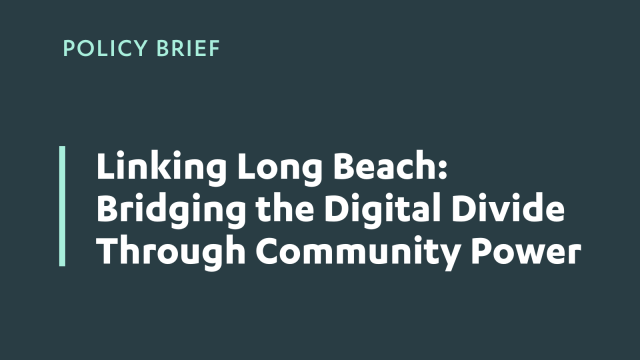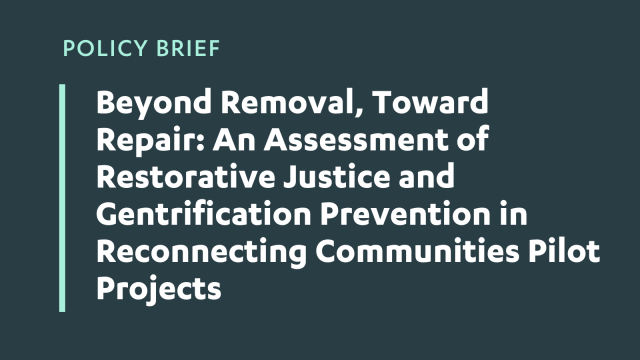Restorative Justice in Transportation Planning: Evaluating Equity and Freeway Redress Across Reconnecting Communities Projects in Pasadena and San Diego
This report evaluates the extent to which federally funded Reconnecting Communities Pilot (RCP) projects align with restorative justice (RJ) principles, focusing on three case studies: two in Pasadena and one in San Diego. Drawing from a mixed-method approach, the research integrates a literature review of freeway-related harm, spatial analysis of displacement vulnerability, and a comparative evaluation of project merit criteria. The analysis highlights how historical infrastructure decisions disproportionately displaced low-income communities of color, producing long-term socioeconomic and environmental inequities that persist today. While federal initiatives such as RCP and Justice40 mark a significant policy shift, their effectiveness hinges on implementation.
Findings from both Pasadena projects demonstrate strong alignment with community-led planning and anti-displacement strategies, though public responses revealed tensions between historical acknowledgment and present-day resistance. In contrast, San Diego’s Mend the Gap project proposes spatial reconnection through lid parks but lacks a clear implementation plan for preventing displacement–despite merit criteria emphasizing equity. Spatial analysis confirms elevated gentrification risk in surrounding areas.
Across all three cases, restorative intent does not always translate into restorative outcomes. Projects that fail to incorporate enforceable anti-displacement tools, land use protections, and shared governance risk perpetuating the very inequities they seek to redress. This research underscores the need for a robust RJ framework that integrates spatial reparations with community power-building. The findings provide actionable insights for planners, policymakers, and advocates aiming to ensure that infrastructure investments produce not only physical reconnection, but also lasting equity for historically harmed communities.



